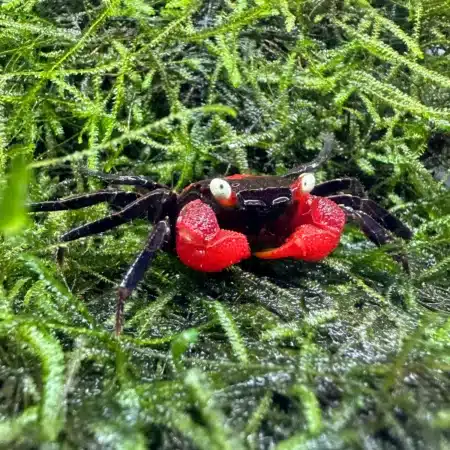Dwarf Synodontis – Microsynodonti
£5.81
The Dwarf Synodontis, also known as Microsynodontis, is a fascinating African Catfish that makes a unique addition to any aquarium. This comprehensive guide provides detailed information on its functionality, features, and use-cases. Secure Transit, Shipping Convenience, Dead on Arrival (DOA) Policy.
994 in stock
Short Description: The Dwarf Synodontis, also known as Microsynodontis, is a fascinating African Catfish that makes a unique addition to any aquarium. This comprehensive guide provides detailed information on its functionality, features, and use-cases.
Product Categories: African Catfish, Fish
Attributes:
– Secure Transit: Our 24-hour courier service ensures your fish arrive safely with poly boxes and heat packs during colder months.
– Shipping Convenience: Combine multiple items in one order to streamline shipping.
– Dead on Arrival (DOA) Policy: Should any fish arrive deceased, promptly inform us with photographic evidence, and we will refund you or send you a replacement.
Product Description:
Scientific and Common Names: The Dwarf Synodontis, scientifically known as Microsynodontis, is a small-sized catfish species native to Africa. It is commonly referred to as the Dwarf Synodontis due to its small size.
Habitat: In the wild, Dwarf Synodontis can be found in various freshwater habitats across Africa, including rivers, streams, and lakes. They prefer areas with dense vegetation and hiding spots.
Tank Setup: To provide a suitable environment for the Dwarf Synodontis, a well-maintained aquarium with a minimum capacity of 20 gallons is recommended. The tank should have plenty of hiding places such as caves, driftwood, and plants. A sandy substrate is ideal for these bottom-dwelling fish.
Diet and Nutrition: Dwarf Synodontis are omnivorous and have a diverse diet. They will readily consume high-quality sinking pellets, flakes, frozen or live foods such as bloodworms, brine shrimp, and small crustaceans. It is important to provide a balanced diet to ensure their optimal health.
Size and Growth Rate: The Dwarf Synodontis typically reaches a maximum size of 3-4 inches (7-10 cm) in captivity. They have a slow growth rate and may take several years to reach their full size.
Behavioral Traits: These catfish are peaceful and can be kept in community aquariums with other non-aggressive fish species. They are primarily nocturnal and will spend most of their time hiding during the day. Dwarf Synodontis are known for their interesting behavior of using their pectoral fins to “walk” on the substrate.
Care Level: The care level for Dwarf Synodontis is considered moderate. They require a well-maintained aquarium with regular water changes and proper filtration. Monitoring water parameters such as temperature, pH, and ammonia levels is crucial for their well-being.
Breeding and Reproduction: Breeding Dwarf Synodontis in captivity can be challenging. They are egg-layers and require specific conditions, such as the presence of suitable spawning sites and optimal water parameters. Providing caves or PVC pipes as potential spawning sites can increase the chances of successful breeding.
Health and Disease Prevention: To maintain the health of Dwarf Synodontis, it is important to provide a clean and well-maintained aquarium. Regular water testing, proper filtration, and a balanced diet are essential. Quarantining new fish before introducing them to the main tank can help prevent the spread of diseases.
Optimal Water Conditions: Dwarf Synodontis thrive in water with a temperature range of 75-82°F (24-28°C) and a pH level between 6.5 and 7.5. They prefer soft to moderately hard water with a dGH (general hardness) of 5-12.
Lifespan: With proper care, Dwarf Synodontis can live for 5-8 years or even longer in captivity.
Additional Interesting Facts:
– Dwarf Synodontis are known for their unique appearance, with a slender body, long barbels, and striking patterns.
– They are excellent scavengers and will help keep the aquarium clean by consuming leftover food and detritus.
– These catfish have a peaceful temperament and can be kept with a variety of fish species, as long as they are not aggressive or too large.
– Dwarf Synodontis are popular among aquarists for their interesting behavior and ability to adapt to various tank setups.













Reviews
There are no reviews yet.